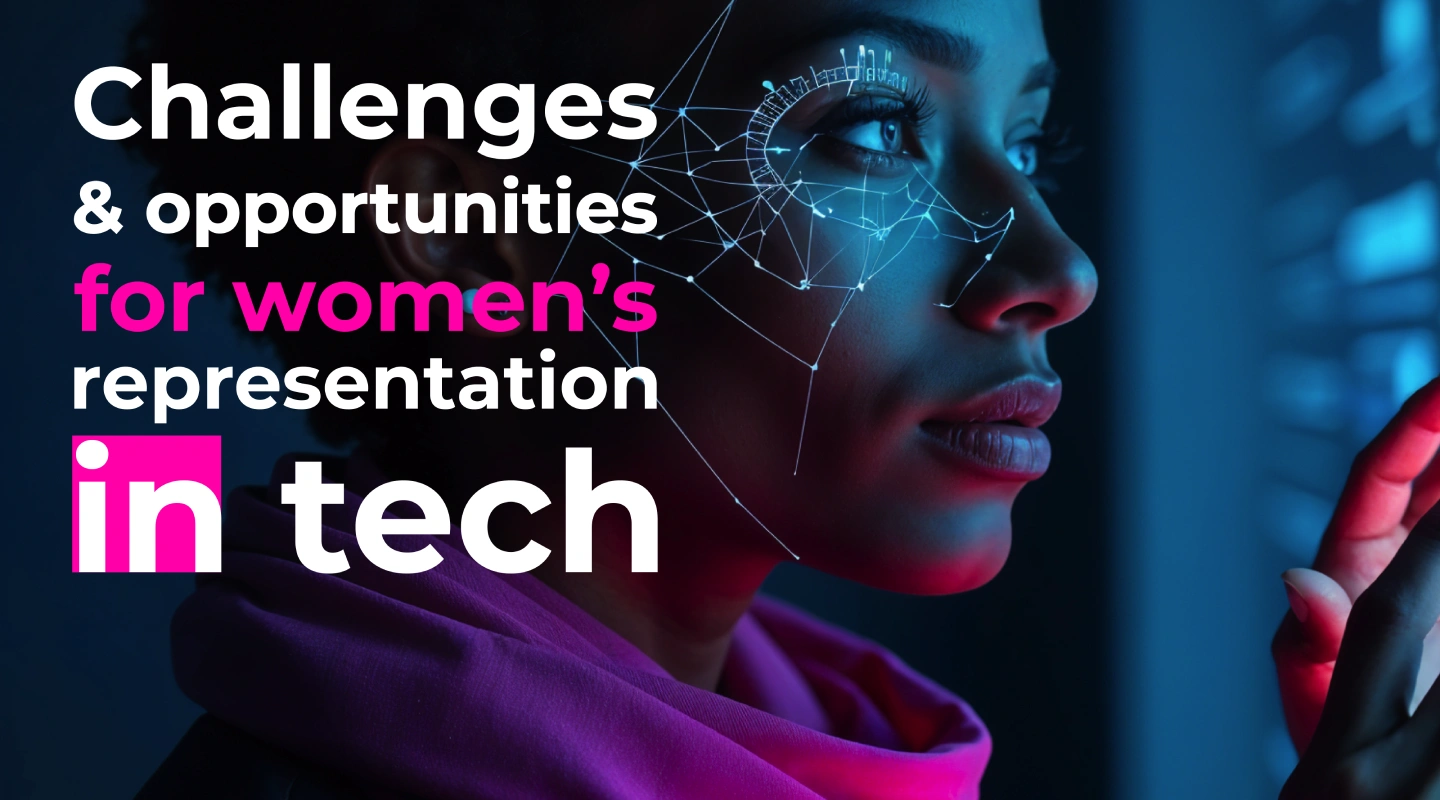Challenges & opportunities for women’s representation in tech
2025-03-17T14:30:17

Tech’s reshaping the world, but one issue’s still lagging: women’s representation in key roles.
According to Grant Thornton’s 2024 report, just 32% of leadership roles in tech are held by women—a figure below the global average. And in technical roles like CTOs, that number drops to 20%. This isn’t just about fairness—it’s holding back innovation.
Why does it matter? Because diverse voices in dev teams, especially in fields like AI, stop biases and exclusions from creeping into tech. If women aren’t at the table designing the future, we risk building tech that ignores half the population. But it’s not all bad news: there’s clear opportunities to fix this, from flexible work models to transparent policies.
Women in leadership roles
Women in tech face a thicker glass ceiling. While 45% of HR Director roles are held by women, only 25% become CEOs in tech companies. For technical roles like CTOs, it’s worse (20%). This reflects a systemic issue: women get pushed into “soft” areas (like HR) and excluded from technical decision-making.
But it’s not just about headcount. When women lead, they bring unique perspectives that dodge costly mistakes. For example, diverse AI teams catch algorithm biases that homogenous teams miss. Excluding women isn’t just unfair—it caps tech’s true potential.
How to break the cycle? Boost mentorship, spotlight female leaders, and create clear career paths. As David Peneycad, COO of Grant Thornton, says: “Gender diversity isn’t a social initiative—it’s a business imperative.”
Key areas for parity
Women’s representation in tech hinges on two critical stages: attracting talent and retaining it. Let’s break both down.
Early careers
The first step to building leaders is attracting young talent. Luckily, 54% of tech firms use hybrid models, helping women balance work and life. But remote work has pitfalls: without efforts to integrate new hires, women miss out on key networks for advancement.
The fix? Leaders who mentor and model success. Celebrating women’s wins in tech inspires the next gen. Hiring isn’t enough—you’ve gotta build cultures where women feel valued from day one.
Retaining women
Tech saw massive layoffs in 2023 (263,000 jobs), but few companies track if women were hit harder. Without data, inequalities go unchecked. Worse: without policies like flex hours or post-maternity support, women leave the industry at critical career stages.
Tracking turnover by gender and linking it to DEI (Diversity, Equity & Inclusion) initiatives is key. Retaining female talent isn’t just ethical—it’s a competitive edge.
The pay gap in Tech
In Europe, women in tech earn 26% less than men—but it’s a global issue. In Silicon Valley, women make 84% of men’s salaries, while in Boston, they earn 93% (per Hired). The kicker? Only 40% of tech companies measure this gap, making it hard to fix.
The gap widens with seniority: entry-level women earn 91 cents to a man’s dollar, but senior roles drop to 78 cents. This not only demotivates pros but scares off future talent.
What fuels the gap?
Occupational segregation
Women get funneled into lower-paid roles (like project management or HR), while high-paying fields (software engineering, data science) stay male-dominated.
Salary negotiation
Men are 3x more likely to ask for raises—and request higher amounts. Women often undervalue themselves due to cultural stereotypes.
Corporate culture
Unconscious biases in performance reviews or promotions keep inequality alive. Without pay transparency, these practices fly under the radar.
The fix? Clear policies: salary audits, bias training, and support for women to negotiate fairly.
Women’s representation & AI: hidden risks
AI’s shaping the future, but if it’s built by mostly male teams, it’ll repeat past mistakes. We’ve seen it: voice recognition systems that fail women or algorithms reinforcing gender stereotypes. As Rena Konomi warns: “If we use non-diverse teams, AI will ignore women’s needs.”
The solution? Include women in technical and leadership roles for AI. Diverse teams don’t just prevent bias—they spark better ideas. And this isn’t a “nice-to-have”—it’s essential for tech that serves everyone, not half the world.
Women’s impact in tech is far from optimal, but progress is happening. Compared to past years, more women hold leadership roles, and strategies to include them in tech projects are improving.
At CodersLab, we push for female talent across tech—recruitment, dev, project management, data analysis, and more. We design and apply inclusion policies to level the playing field and help women claim their space in tech.